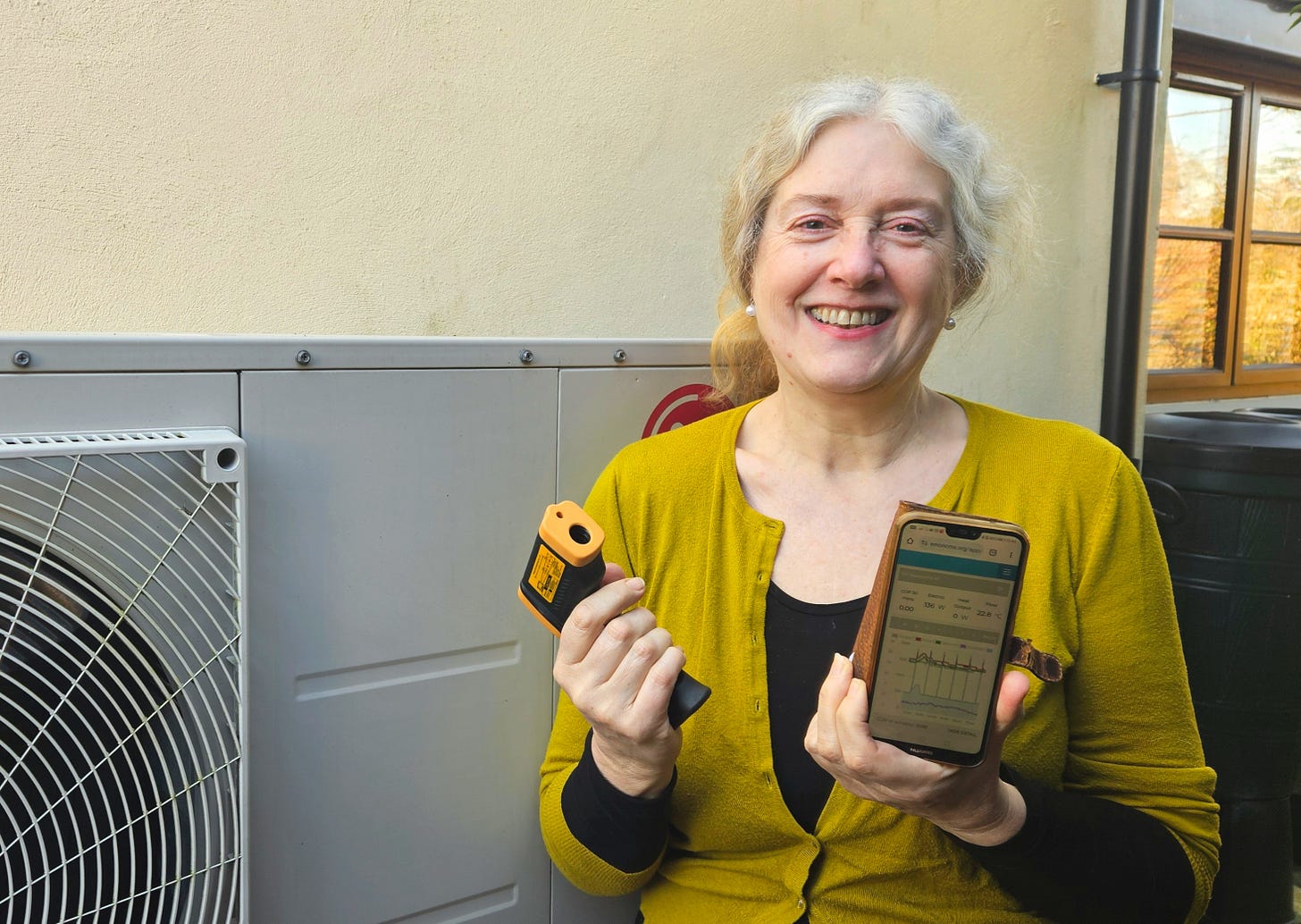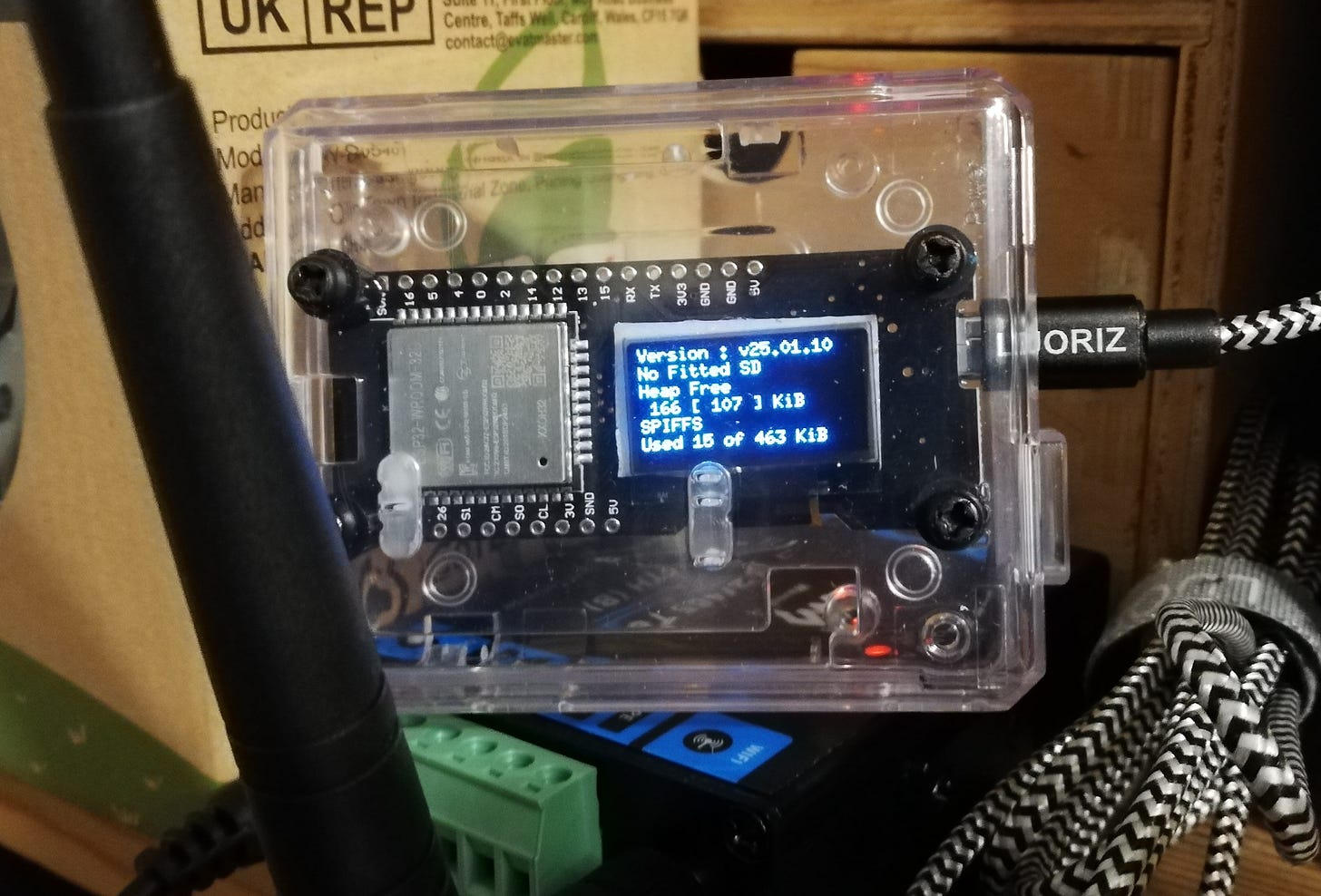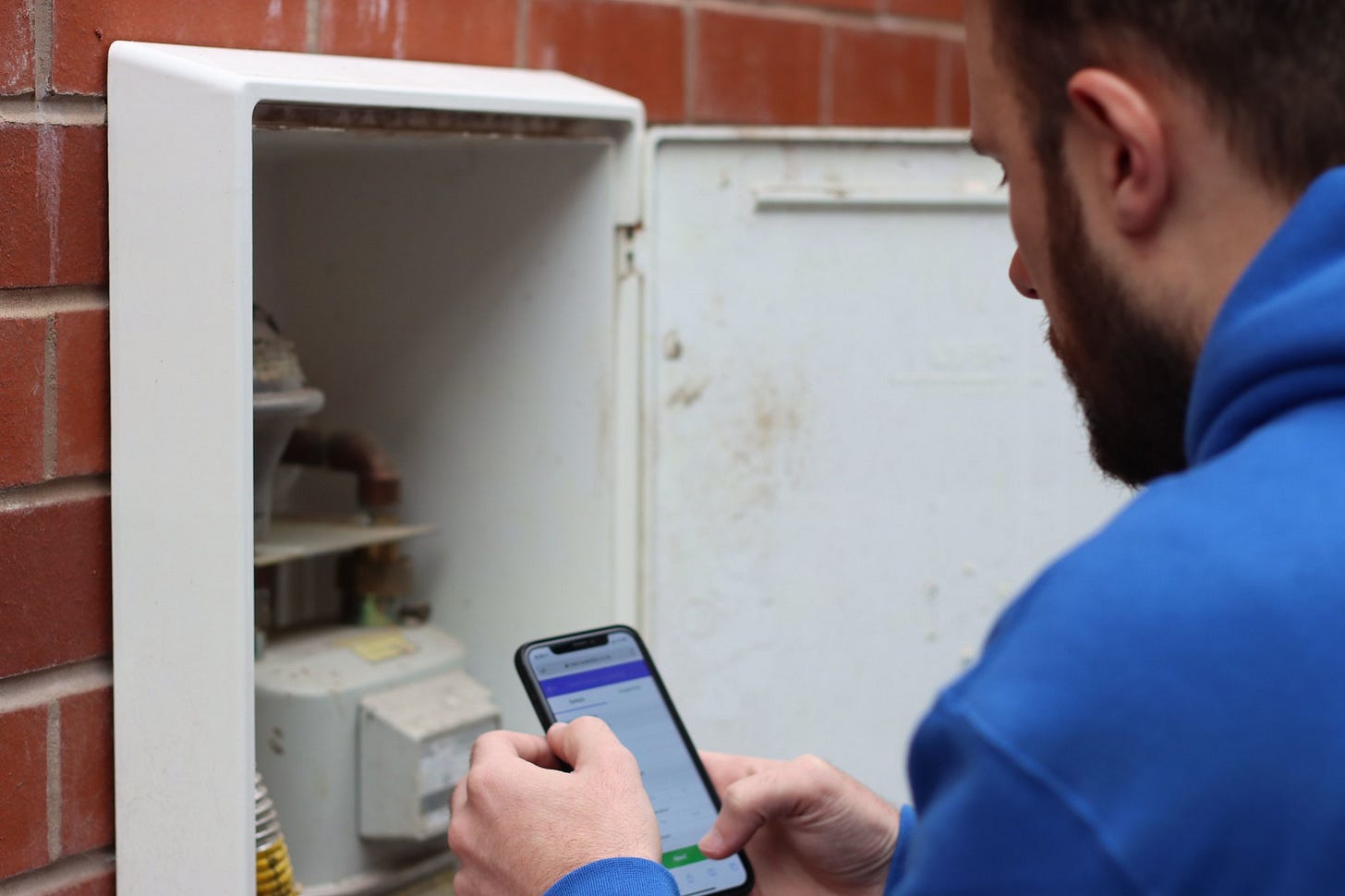‘An internet stranger helped solve my heat pump puzzle’
Gadgets can monitor heat pumps and reveal their workings

After Helen Jeffrey and her family moved house in 2020, she was excited to swap the old oil-based heating system in her Gloucestershire property for a heat pump. Then she saw what it was costing her to run.
“Oh my God, look how much money the electricity bill is for,” she recalls thinking. Her daily electricity costs jumped by 300%, she estimates.
Jeffrey decided to investigate. Although she had no detailed knowledge of heating systems at the time, she turned to the internet and soon found a wealth of information. And, in a Facebook group, she got chatting to a software engineer from South Yorkshire called Peter Walton.
Walton was happy to assist Jeffrey as he had just helped his sister solve a similar problem with the same make of heat pump.
He offered to make Jeffrey a gadget that would track her heat pump in real-time and chart its activity on a graph. “I know how to write software,” says Walton. “It’s just like bread and butter.”
Jeffrey also learned how to adjust some of her heat pump’s settings to improve its performance.
“Although I’ve had the heat pump since 2021, I only really now feel like it’s not a mysterious black box anymore – and that’s because of the monitoring,” she says. “I am a big heat pump fan but I think it’s a big learning curve.”
Walton says he was happy to help at no cost to Helen. “There are a number of people who’ve got their engineering background and then you’ve got consumers who just want the damn thing to work,” he says, adding that he plans to release his software in open source form in the future.
Size matters
Jeffrey says that her heat pump problems are rooted in the fact that the unit installed at her house is oversized. That is, it appears to produce more heat than the property can soak up, meaning it may not run as efficiently as it should.
“It ramps up, overheats the water, shuts down, waits a bit, ramps up again. It’s not efficient,” says Jeffrey. “What you really want is the heat pump to be running nice and slow.”

By tweaking the device’s settings, however, Jeffrey was able to reduce how hard it worked at pumping water around her radiators. She also adjusted settings for how the heat pump responds to seasonal variations in outdoor temperature.
Thanks to this and other measures including improving her home’s insulation and switching electricity tariffs, she estimates that she has got her electricity bill, which covers her heat pump and other household appliances, down from around £200 per month initially, to roughly £100 per month on average.
To keep an eye on her system, Jeffrey uses devices including an emonPi, which measures electricity consumption, an infrared thermometer for checking the temperature of her radiators and the fabric of her home, plus the gadget made by Walton. This latter gizmo tracks internal data from the heat pump such as the flow temperature of water sent out to Jeffrey’s radiators, and the temperature of that water as it returns to the heat pump.
Jeffrey has since opened her home to people keen to find out more about heat pumps as part of the Visit a Heat Pump scheme run by Nesta, a charity.
The more you know
We live in an age when energy has become disastrously expensive. Whatever kind of heating system you have, tracking how well it’s running could save you significant sums of money and boost the comfort of your home.
Recently, I asked people on Bluesky if and how they tracked their central heating system’s energy consumption. I got a huge range of responses – including from folks who had attached sophisticated monitoring equipment to their heat pumps. Others simply took regular readings of their gas meter, for example, and recorded their usage in an Excel spreadsheet.
I realise that many people would balk at going to such trouble. Some told me as much. But the data that central heating-watchers are gathering can clearly yield important insights.
I heard, from Paul Zahniser, for example, an aviation engineer in the US, who says his smart thermostat revealed that his two-stage gas furnace apparently never activates its second stage, even when the outdoor temperature drops to a blisteringly cold -23C. The first stage seems powerful enough to heat his home in such conditions, meaning that his device, like Jeffrey’s, appears oversized for his property.
In Jeffrey’s case, it would theoretically be possible to add even more monitoring tech so that she could track her heat pump’s coefficient of performance (COP), a measure of how much heat the device produces relative to how much electricity it consumes. For example, a COP of 3.2 means you get 3.2 kilowatt hours of heat for every kilowatt hour of electricity used.
Setting standards
Data on how heat pumps perform in real life is critical, says Adam Bell, director of policy at Stonehaven, a consultancy. Such information could help to ensure that installers are setting up correctly sized heat pumps, and configuring them to run as efficiently as possible.
“We should have regulations focused on outputs,” he says. “Ultimately, what we want is a high-performing heat pump. We want installers to think very carefully.”

Currently, such information is only really available from early adopters and enthusiasts who are personally interested in tracking their heat pump performance, or COP measurements, for example. Some manufacturers also track this data internally.
People sometimes decide to publish the live results from their heat pump monitoring kit on websites such as HeatPumpMonitor.org, to show off good installations and inform the heat pump community. This represents a subset of installations, though, and may not be indicative of heat pump performance across a broad range of households.
Heat pump monitoring should be much easier for consumers to access, suggests Andrew Sissons, deputy director at Nesta: “I’ve never heard anyone complaining about how to find out their broadband speed at the click of a button. It should be the same for your heat pump performance.”
Although Jeffrey plans to replace her heat pump with a more appropriately sized model in the future, she says she’s much happier with her current setup than she was. She stresses that heat pump owners shouldn’t have to go to such lengths just to achieve an efficient system but she praises the enthusiasts who helped her tackle her own problem.
“It’s the forums and people online, that’s what’s made the difference to me,” she says. “Without that, I would still be in the dark and probably really struggling.”
Further reading on this week’s story
I first wrote about heat pump monitoring tech in this article for BBC News.
And, last year, I hunted down some of the most efficient heat pump systems in the world for Wired.com.
OpenEnergyMonitor, which runs HeatPumpMonitor.org, has a detailed guide explaining how to track the performance of your own heat pump.
Thanks for reading! If you enjoyed this story, don’t forget to share it with your friends and colleagues. You can also subscribe to The Reengineer and follow me on Bluesky.




